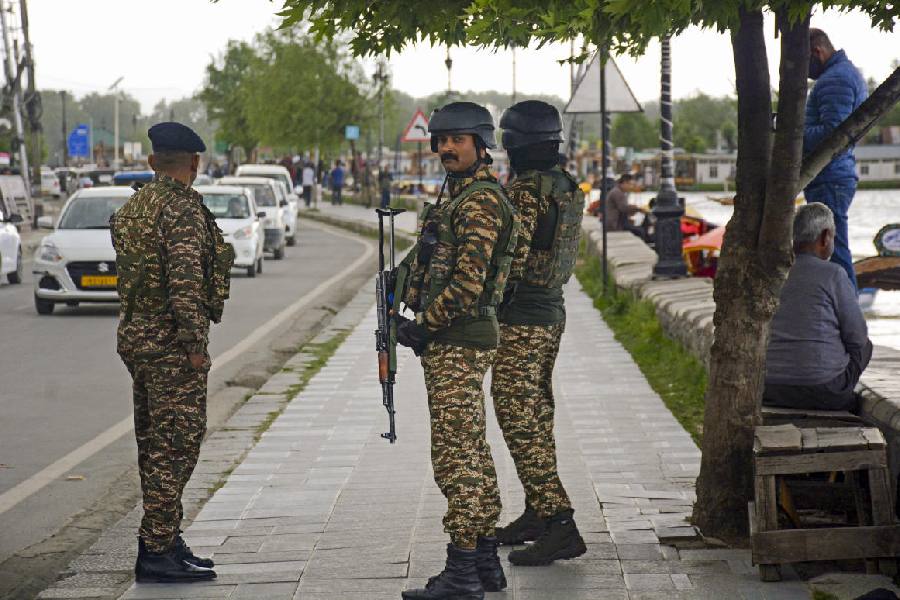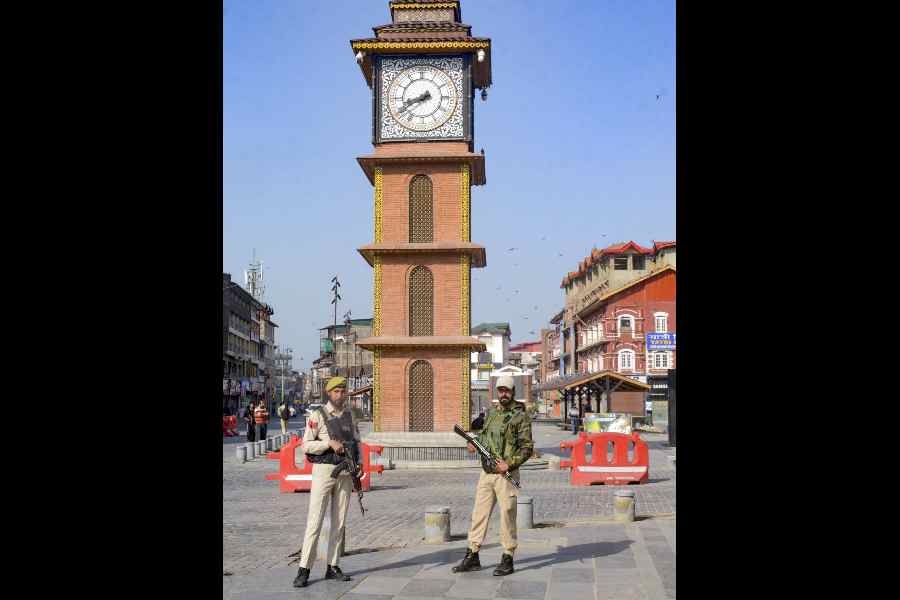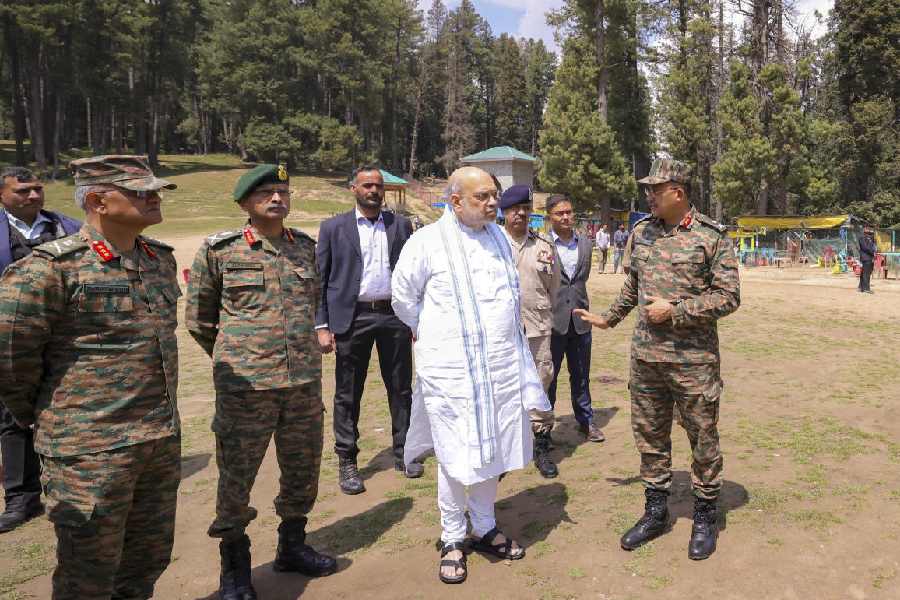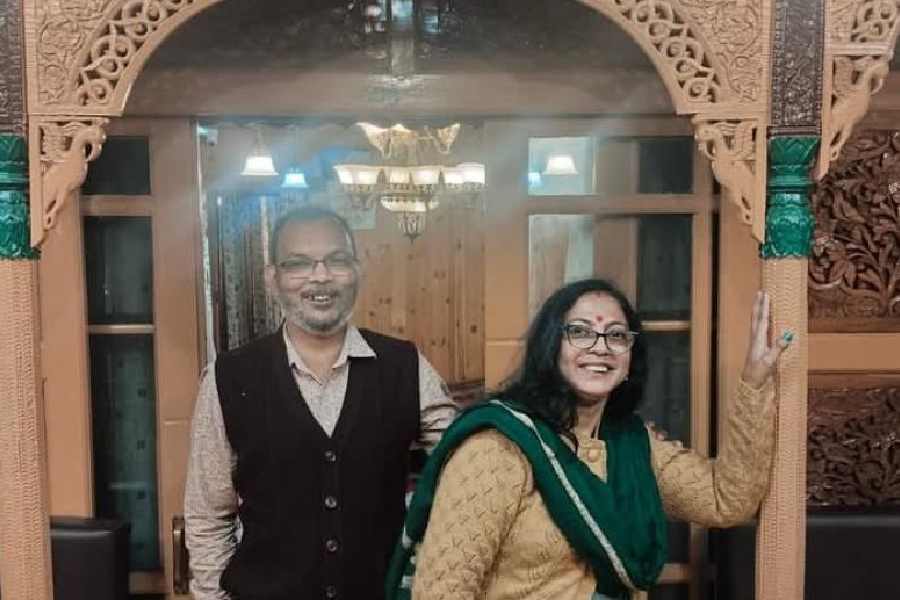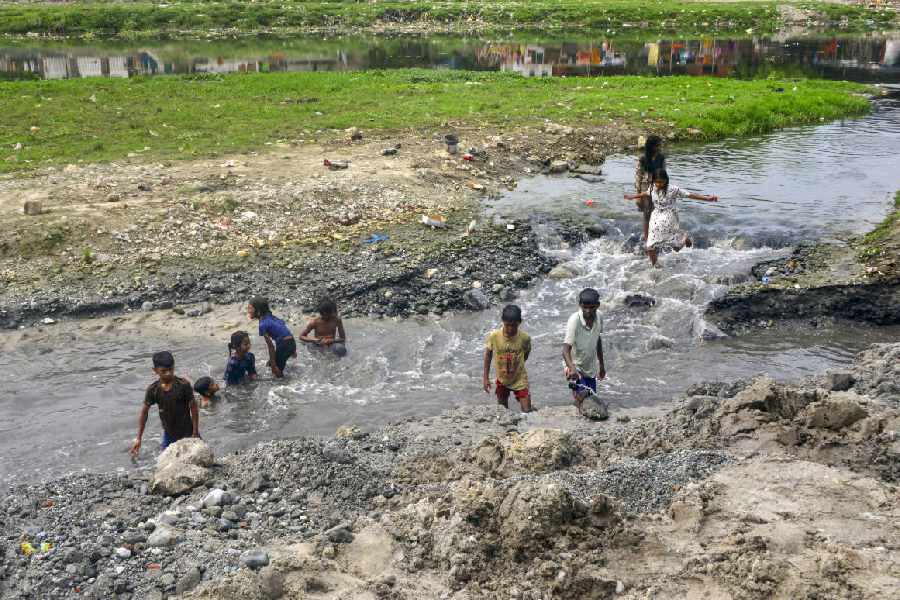At first glance, Ghatal town in Bengal’s West Midnapore district looks just like any other small town in India. And then you notice that the houses seem to stand on their toes, and every other building, residential and otherwise, has boats parked in front of them.
We — Ghatal residents Bikash Dhara, Debashis Maity, Narayan Nayak and myself — drive from Panskura railway station to Ghatal town. It takes about an hour in a car.
To one side of the main road is the Silabati river. The road itself is built 20-25 feet above river level and the town that lies beyond the road is at a dip. So when the car turns into one of the lanes leading into town, it lurches as it would while negotiating hilly terrain. The other bank of the Silabati remains unencumbered.
Ghatal has a lot of things to boast of. It is known for its rice production, flower production, it is also one of the largest producers of cucumber, cabbage and cauliflower. It is a potato hub.
But whatever Ghatal produces is between October and May. For the remaining months, it experiences heavy rains and consequent flooding. And that is how it has been for as far back as locals can recall.
Dhara narrates how the British, exasperated by the wild ways of the Silabati, built a pontoon bridge. This was around the mid-19th century. To date, it endures. “When the water level rises, it pushes up the bridge, helps people cross the river,” he says. But use of the bridge was a matter of privilege, reserved for the British. They used it to access their indigo plantations. Like it, the embankment that came up in the 1950s, was meant to safeguard only the privileged in Ghatal.
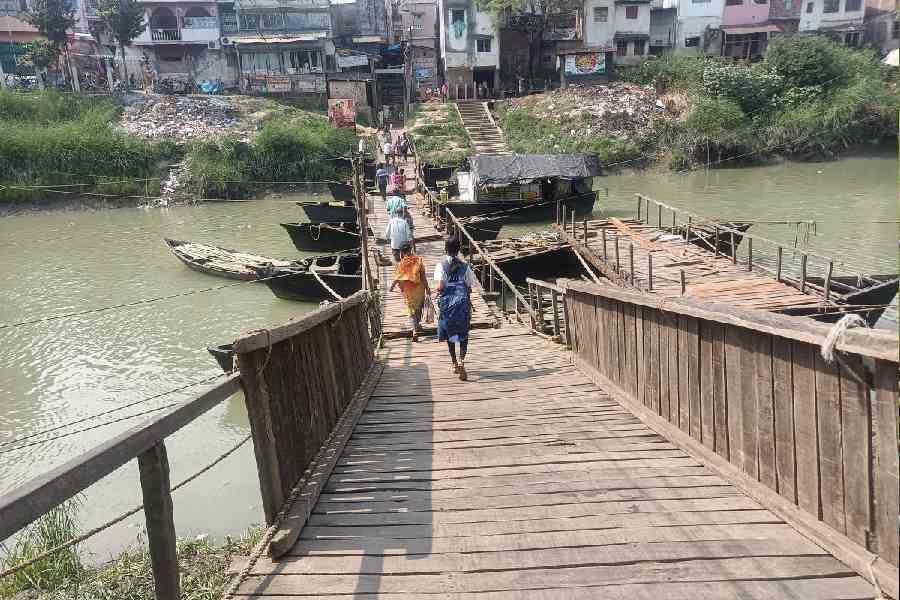
The British-built pontoon bridge in Ghatal. Photo: Moumita Chaudhuri
“Ghatal’s flooding problem was known to everyone, even Jawaharlal Nehru,” says local CPI(M) leader Ashok Santra.
The same factors that make Ghatal so fecund are also responsible for its liquid destiny. Ghatal town lies to the east of Calcutta, 120 kilometres away.To its west is Bankura district, andto its east are the districts of Hooghly and Howrah.
Ghatal itself is what geographers call a backswamp, a dimple in West Midnapore. It is surrounded by a network of small and big rivers — Silabati, Kangsabati, Parang, Tamal, Kubai, Donai, Ketiya, Jhoomi and Durbachoti.
This is what happens every monsoon. Bankura releases water into the Kangsabati. A swollen Kangsabati merges with the Silabati at Kanki, which is in Ghatal. The monsoon-laden smaller rivers also feed Silabati. All this water flows into Ghatal and gets trapped.
Typically, in such a scenario, it is the canals that help to drain out water. In this case, however, the Katan Khal, Bhasra Khal, Topa Khal, Palashpai Khal, Durbachoti Khal and Chandreshwar Khal are themselves clogged.
We stop at Dhara’s house for tea. The only room on the ground floor looks rather stark. The CPI(M) zonal office where we met Santra earlier was also like that; it was just off the main road and Santra had remarked that this side of the river is “relatively safe”.
Dhara tells the story of one night from 1978. “The water level was rising by 18 inches every hour. That night, our mud hut was washed away. My uncle’s house was safe as it was made of bamboo.” He continues, “People would start stocking food the moment it started raining. Those who lived in two-storeyed structures would shift to the first floor. If there wereelderly people at home, the situation was doubly risky. I have seen peopledie without medication. It was impossible to ferry anyone to the hospital in peak monsoon.”
The area has three high schools anda college. The Ghatal Rabindra Satabarsiki Mahavidyalaya is decorated with cut-outs and posters of Ghatal MP and film actor Deepak Adhikari, also known as Dev.
Gourishankar Bagh, who is currently employed with the college, used to be the headmaster of Ghatal Yagoda Satsanga Sri Yukteswar Vidyapith. Bagh says, “Every year, the school closes down in the monsoon months. The ground floor goes underwater.”
Bagh narrates how even in the 1980s, come monsoon he would have to go to work in dinghies. He says, “I had to move all the files and papers from the ground floor to the first floor. And also the mid-day meal provisions.”
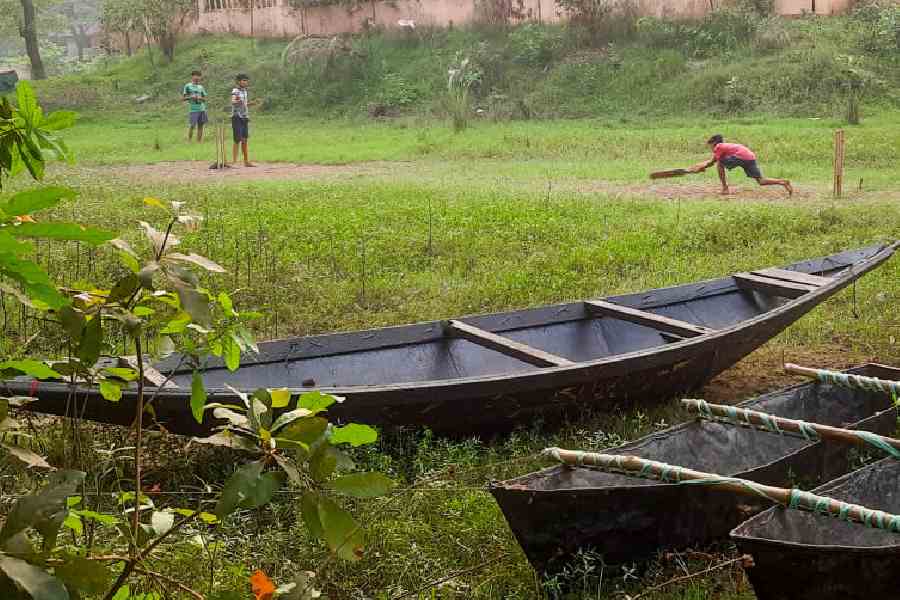
Flood water receded, boats remain in playground in front of Jaiguru Ashram at Ghatal. Photo: Koushik Santra
Other residents talk about how they and the generations before them have used dongas or indigenous canoes to get around the place between Juneand October.
The first MP from Ghatal, Nikunja Behari Chowdhury of the Communist Party of India had raised the Ghatal issue in Parliament in 1956. Subsequently, the Mansingh Committee was formed, and the Ghatal Master Plan was presented in 1980. “The foundation stone for the project was laid in 1982,” says Santra, 69, who has been tracking progress of the plan from the time he was a college student.
But work on the project never could take off.
Maity and Nayak are members of the Ghatal Master Plan Rupayan Sangram Committee. As is implicit in its name, the committee’s single aim is to move the Ghatal plan from paper to wet ground. The committee also comprises residents, ex-IPS officers, engineers and social workers of the area.
Santra continues, “The initial plan involved desilting of the Rupnarayan, Mundeshwari, Dwarakeswar and Kangsabati rivers. The source of the Mundeshwari is the Damodar, which is in Jharkhand. The Dwarakeswar flows through the Chota Nagpur Plateau, and enters Bengal at Purulia before flowing through Midnapore. Kangsabati enters Bengal at Bankura and thereafter Midnapore. Each river is controlled by the Ganga Flood Control Commission. How could work start when there are interstate rivers involved?”
And so, Ghatal continues to dread the rains. Santra recalls how he could not go to school during the monsoons, how people climbed onto tree tops for refuge and waited for relief work to start. To date, schools and colleges, hospitals and medical centres, government offices and police stations go under water every year, and so do agricultural lands.
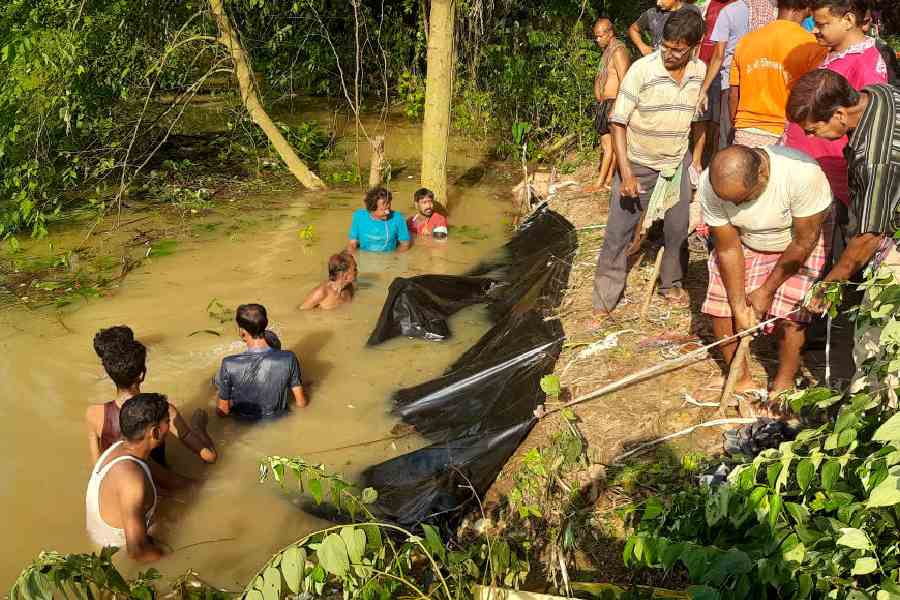
Shilbati River Dam being repaired at Harisinghapur, Ghatal. Photo: Koushik Santra.
Residents say the project was the responsibility of the state irrigation department. “A bungalow came up the next year for administrative officials, but nothing else happened,” says a shopkeeper.
In August 2016, Dev said in Parliament: “Madam Speaker... For the last 64 years, we have been searching for an answer to the question whether the Ghatal Master Plan would be implemented or not...”
The Ghatal Master Plan will benefit people living in 13 blocks across East and West Midnapore, spread over five Assembly and three Lok Sabha constituencies — Ghatal, Arambagh andTamluk. The Lok Sabha constituencies are helmed by Dev and Mitali Bagh of the Trinamool and Abhijit Gangopadhayay of the BJP. The Telegraph tried to get in touch with all of them, but no one responded.
In 2024, Dev refused to contest from Ghatal. And then something happened and all was well again. Says Santra, “After the 2017 flooding, he had promised to ensure that the master plan would be executed. But nothing happened.”
A young man who owns a shop on the banks of the Silabati tells me that when the waters start to rise, he packs up his wares and the rattan roof, and flees.
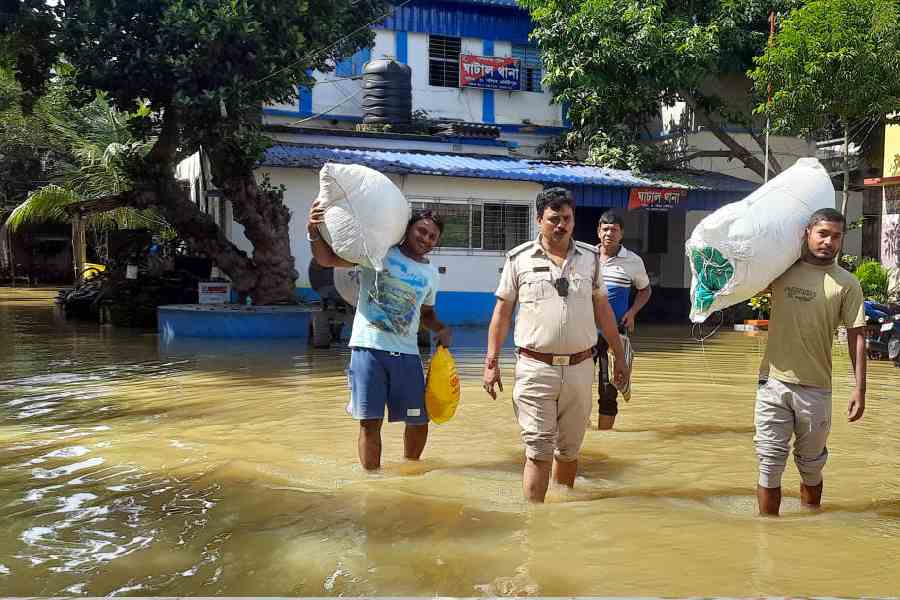
Now, Assembly elections are around the corner. In the state budget, the Trinamool government allocated ₹500 crore for the implementation of the Ghatal Master Plan project. “Armed with the new announcement, Dev will be in a better place when he comes to campaign. Last time, the BJP won from Ghatal,” adds Santra.
The BJP’s Sital Kapat is the MLA from Ghatal. He must be happy with the ₹500 crore announcement? Kapat tells The Telegraph, “Yes, the CM has allotted money. But she does not seem to have the intention to do anything. If she had, she would have convened an all-party meeting, issued a white paper, and a committee would have been formed...”
And the blame game continues.


